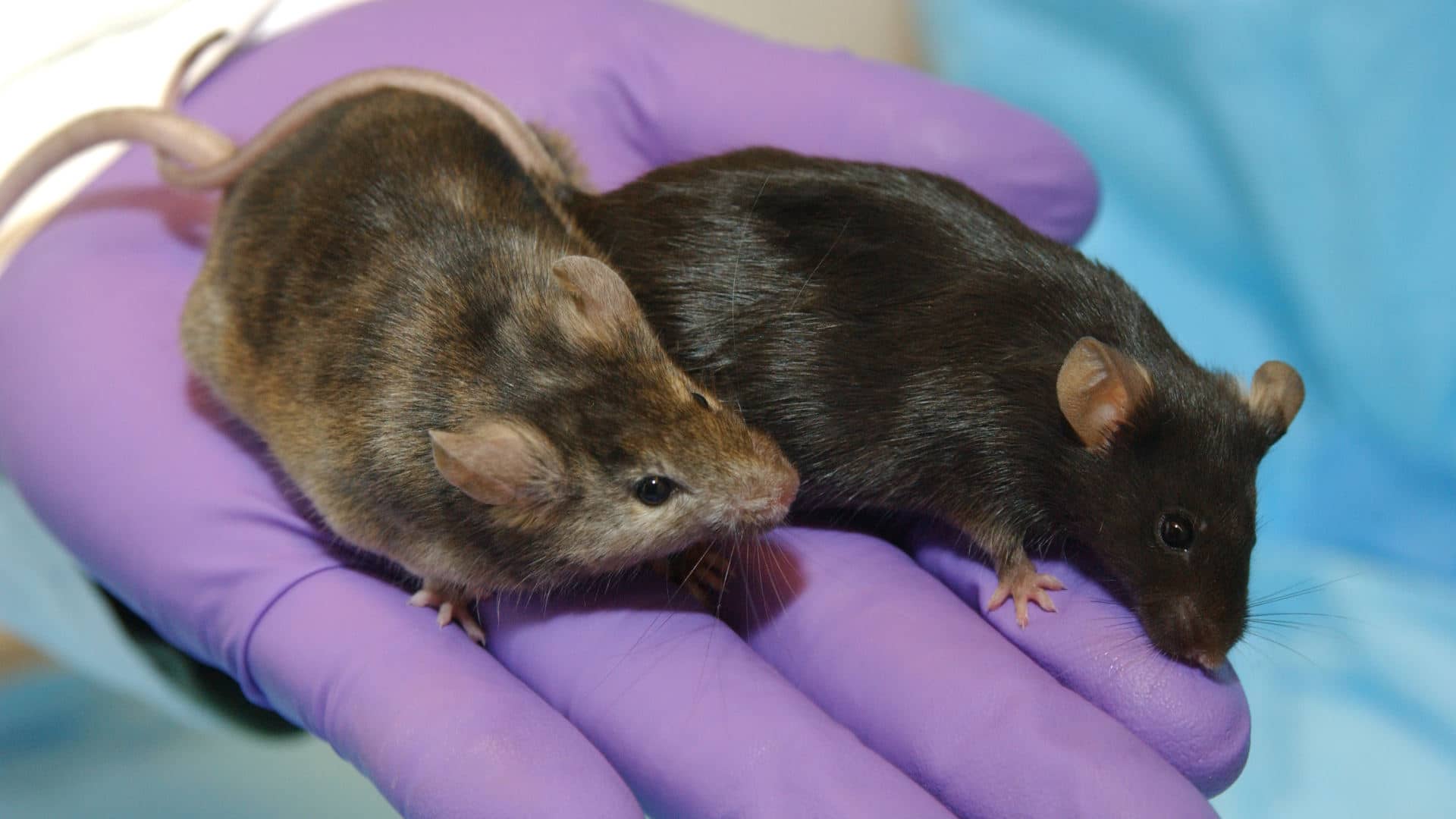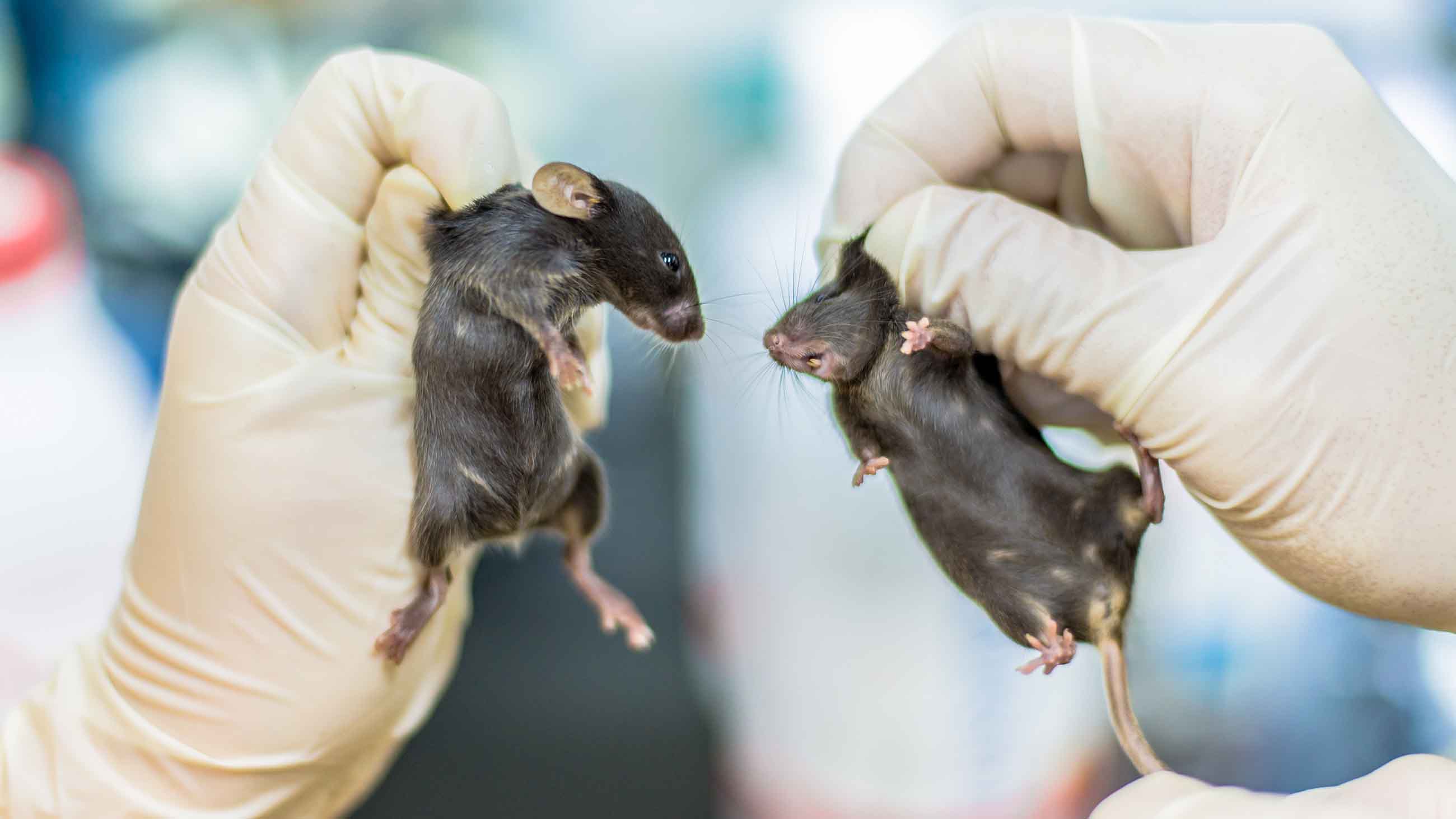Animal models, especially mice, have given scientists valuable insights into the mechanisms behind countless human diseases. They have been instrumental to the discovery of drug targets, metabolic pathways, and gene function. They’ve helped to lay bare the basic biochemistry of metabolism, hunger, cognition, and aging. Because mice are, to a certain extent, miniature facsimiles of human anatomy and genetics, science has an array of tools at its disposal to manipulate and visualize their bodily processes in real time, in highly controlled settings.
But, as the recent Covid-19 pandemic has revealed, science doesn’t always have the tools to minimize loss of animal life. As the pandemic took hold and academic research labs across the U.S. shuttered indefinitely, scientists were faced with an unprecedented animal care dilemma. Without the teams of veterinary nurses and technicians who usually attend to the animals daily, many labs were forced to resort to wholesale euthanasia. Some labs sacrificed hundreds of animals, and were criticized harshly for their management of their experimental colonies. Many started to consider more durable, long-term plans for preserving and storing their mouse lines.
In the lab where I work at the University of California, San Francisco, and where for the past two years I’ve been the designated rodent surgeon, we were asked to euthanize all but our most irreplaceable mice. As new animal researchers, we are trained to sacrifice our mice humanely — to give them a dignified death. Returning to lab after the shutdown to find rows of empty racks that once held cages of mice we had worked with for months was a shock, and it was hard to conjure dignity in that moment.
That experience led me to reflect on how we as a research community use animal models in biomedical research, and how we might better use them in the future. And I’ve become increasingly convinced that the animal model of the future will live not in a cage but in a computer chip: By simulating biological systems rather than experimenting with them, we can make drug development and biomedical research safer, more efficient, and more effective.
This is not to say that researchers’ treatment of animals has been haphazard. Research in animal models is highly regulated. These regulations vary in austerity from country to country and institution to institution, but they revolve around a common set of principles known as the “three Rs“: Replace the use of animals when possible, reduce the number of animals used per experiment, and refine methods to minimize suffering and improve welfare.
A few years ago, when I was a new mouse surgeon, the three Rs were the guiding tenets of a week-long course I took at the René Remie Surgical Skills Center in Almere, Netherlands. The center’s founder, René Remie, advocated for meticulous surgical technique, held to the same standards of sterility and post-operative care as any human surgical procedure. But he was also a proponent of the thinking that longer-term strategies can hasten recovery time from infection and surgical procedures. For instance, Remie and other researchers advocate what’s called environmental enrichment, a method that helps animals cope with the inherent stress of being isolated after a surgical procedure or during an experiment. The researchers place toys, nesting material, or other inanimate objects in the cage that allow the mouse to engage with its surroundings, similar to the way it would in the wild. Studies suggest that environmental enrichment may even promote wound healing in rats.
But the success of strategies like environmental enrichment highlights an inherent weakness of the animal research model: An animal’s behavior is often extremely sensitive to its environment, in ways that are difficult if not impossible to control. This raises a perennial issue in biomedical research of just how reliably conclusions drawn based on studies in mice can be faithfully applied to human disease treatment. For instance, rodents are housed in groups as a rule, but certain kinds of experiments and treatments require them to be isolated, triggering a stress response that could significantly affect their immune activation. Studies have shown that mice and rats who live with companions fare better against injury, stroke, and even tumor growth than their lonely counterparts. As a result, when mice studies ask questions about human diseases, the housing status of the mouse is often a confounding factor. Even slight variation in the ambient temperature of a mouse’s housing room can cause stress responses that affect experimental outcomes. This variability is one reason that treatments that seem promising in mice often produce underwhelming outcomes in human clinical trials.
One attractive complement to animal studies that may address some of these shortcomings is in silico, or “on a chip” medicine. In silico models apply computational modeling strategies to genomic data to predict physiological responses to drugs or other stimuli. Although they are far from being able to replicate the full complexity of a living, sentient being, the U.S. Food and Drug Administration has begun consider computer modeling-based strategies to update the cumbersome and costly clinical trial pipeline. Research with in vitro models, which attempt to replicate animal physiology in test-tube style experiments, have also shown promise. These efforts have given birth to projects like the Comprehensive in Vitro Proarrhythmia Assay initiative, which integrates modeling and in vitro strategies to evaluate the potential for new drugs to cause heart rate abnormalities
Likewise, in 2013, the European Commission assembled a consortium of research groups known as the Avicenna Alliance to unify academia and industry around a set of standards for computer modeling in medicine. Based in Belgium but comprised of independent organizations around the world, the goal of the Alliance is to enable virtual clinical trials whose results can be validated by the same kinds of rigorous standards that are applied to traditional clinical trials.
As the Avicenna Alliance envisions them, virtual clinical trials would be based on unique genetic models derived from individual patients, rather than on large, genetically variable sample groups. Conceivably, this could allow a researcher to simulate a patient’s unique response to a treatment strategy, capturing the effects of subtle variations in baseline metabolism, bodyweight, or underlying health conditions that might influence the patient’s treatment outcomes. It might also significantly reduce the time and expense traditionally required to usher a new drug or medical device from the lab bench to the clinic — potentially lowering the barrier to care for large swaths of the population who can’t afford the often-astronomical costs of life-saving medications.
In silico clinical trials, if and when they are realized, could also address the long-standing problem of sample bias in drug development. Demographically, clinical trials tend to be disproportionately White and, until recently, overwhelmingly male. They therefore don’t fully capture the therapeutic value and potential risks that drugs present to the patients who eventually rely on them. If in silico strategies become widely adopted, they’ll hold potential to both increase the efficacy of new drugs and expand access to treatment.
The ethical debate around the use of animals in research has roiled for hundreds of years and will likely continue to do so. But what the Covid-19 outbreak has made clear is that there are severe weaknesses in the current animal model paradigm. As experiments have come to a halt during the coronavirus lockdowns, researchers have been given time to consider new, more sustainable approaches to discovery. Hopefully, we will look beyond the short-term technical challenges that will inevitably accompany the resumption of business as usual and gaze further afield, toward more humane, more modernized approaches to doing science.
Lindsay Gray is a lab manager at the University of California, San Francisco.












Comments are automatically closed one year after article publication. Archived comments are below.
I’m glad there are some researchers who seem to get it that it would be better not to have to force animals to submit to experimentation — often painful and stressful, and always deadly if the subjects are put to death at the end of an experiment even if they’ve survived. But alas, there are still far too many workers in various fields who take the lives of animals for granted, and bully idealistic students into accepting that if they want to be true scientists, they’re going to have to get tough and deal with treating animals as no better than unfeeling tools.
It’s true that antivivisectionists have been protesting the exploitation of animals in experimentation for a long time. They’ve had successes, but of course there are too many powerful interests at work to keep them mostly marginalized. Those in favor of experimenting on animals claim that benefits for humans justify their actions. But in fact, they’ve never given a truly persuasive defense for their gross anthropocentrism. Just why is it that we should value the lives of humans as so very much more precious than the lives of nonhuman animals?
Glad that you’re all thinking about just maybe reducing animal testing on mice, as I’ve been reading about—and supporting groups trying to end animal experimentation— for at least fifty years.
Making sentient creatures sick for our benefit should have been phased out long ago. Instead, we keep adding to the list of animals we’re willing to torture to benefit man. Not just mice, of course, chimps, rabbits, beagle, even ferrets (as advertised in an article below). And it doesn’t even have to be for a good reason, like cosmetics.
It’s nice that you care enough to give them… “enrichment,” and that actually may even help them heal faster. Who knew that treating a living creature with kindness would make a difference?
You sound like one of the nicer labs. But you should take a look at what some of your colleagues due in their studies. It’s pretty repulsive.